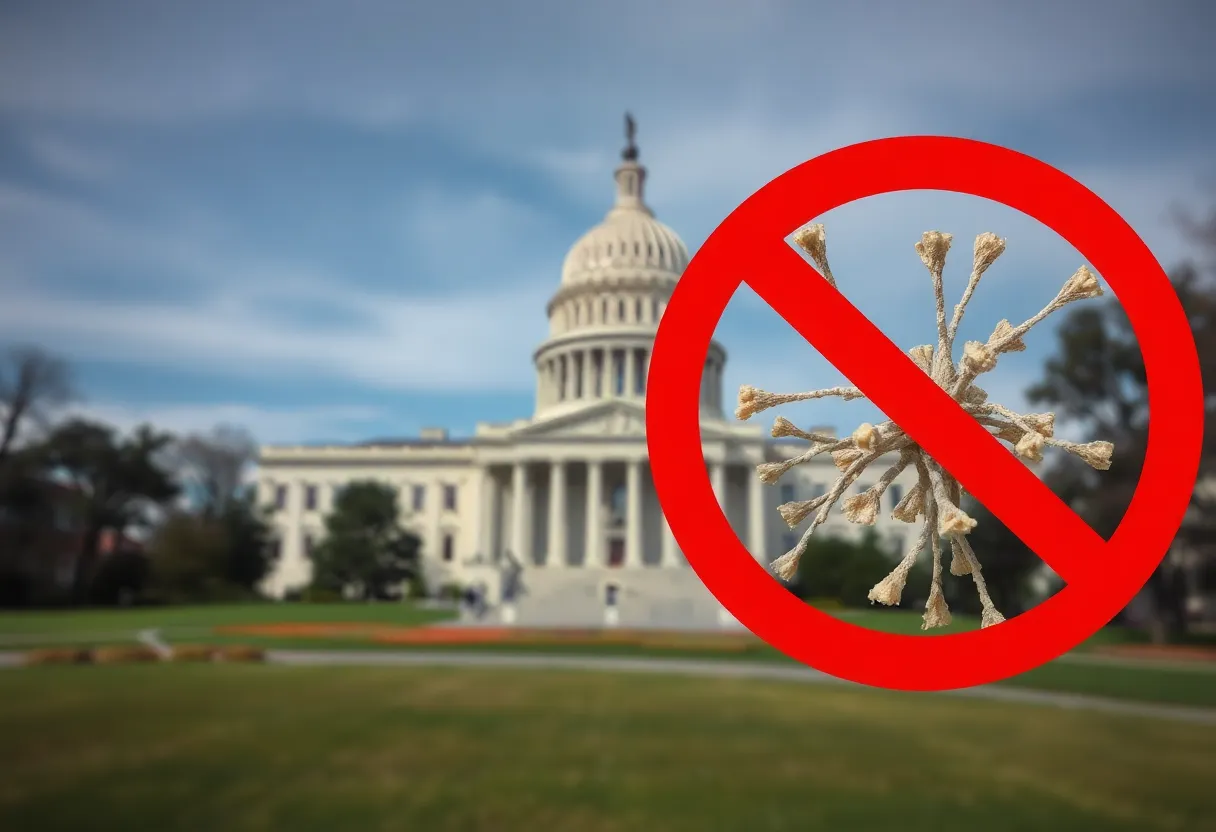News Summary
The U.S. joins over 60 countries in initiating a phased ban on certain types of asbestos, sparking debate over its sufficiency amid health risks.
America’s Controversial Asbestos Battle: A Phased Ban Begins
Despite a long-standing recognition of the health hazards posed by asbestos, this toxic carcinogen continues to be used in the United States today, albeit under increasing scrutiny. Recent developments have seen the U.S. joining over 60 other countries in initiating a phased ban on certain types of asbestos, a move that many are applauding, while others criticize it as insufficient.
The Historical Context of Asbestos Use
Asbestos enjoyed widespread application in a multitude of products for over a century, notably in roofing materials, automotive parts, and in the chlorine production industry. Its durability and resistance to fire made it a preferred material, but by the 1960s, extensive research had established its severe health risks. Now, approximately 40,000 Americans die each year from asbestos-related diseases, including lung cancer and the rare but deadly mesothelioma.
More than 50 nations have acted decisively by banning asbestos entirely, reflecting a growing consensus regarding its dangers. The recent announcement from the Environmental Protection Agency (EPA) regarding a ban on chrysotile asbestos—the only type of asbestos currently permitted for import and use in the U.S.—marks a notable change in policy, albeit one that many view as too slow and limited.
The Details of the Ban
According to the new regulations, companies will be given up to a staggering 12 years to phase out the use of chrysotile asbestos. This type, often referred to as “white asbestos,” is still commonly found in vehicle brakes and chlorine production processes. Critics have pointed out that while this ban is a step forward, it leaves several other forms of asbestos unregulated, raising concerns over its continuous and unchecked exposure in American industries.
A Delayed Response to a Long-Standing Issue
The journey toward banning asbestos in the U.S. has not been a smooth one. A failed attempt to impose a ban in 1989 saw it struck down by federal courts, and legal challenges have stalled progress for more than thirty years. However, the 2016 amendments to the Toxic Substances Control Act (TSCA) have enabled the EPA to implement this phased ban. Even with this recent progress, the truth remains that the decline of asbestos use has been gradual and far from complete.
Ongoing Health Risks and Workplace Safety
One of the most pressing concerns surrounding asbestos remains that of occupational exposure. Asbestos fibers, when inhaled, can lead to a host of serious ailments beyond mesothelioma, including various cancers. The EPA has assured that during the phaseout of chrysotile asbestos, safety measures will be mandated for workers handling these materials. Nevertheless, certain industries, particularly the chlor-alkali sector, are advocating for longer transition periods to find suitable replacements.
A Step Forward or a Half Measure?
The recent ban on chrysotile asbestos has been hailed as a significant milestone in chemical safety. However, many experts and advocates caution that it is merely a partial measure against a far more complex problem. With increasing emphasis from the current administration on public health, there are ongoing concerns regarding legacy asbestos found in older buildings and infrastructure across the nation.
As the nation begins this new chapter in asbestos regulation, the journey remains fraught with challenges. Advocates for comprehensive asbestos bans continue to lobby for complete prohibitions akin to those in other countries, urging for proactive measures to ensure that American lives are no longer endangered by this toxic relic of the past.
Deeper Dive: News & Info About This Topic
HERE Resources
Community Support Rises for Mesothelioma Patients in March Meeting
Asbestos Flooring: The Hidden Danger Lurking in Your Home
Air Quality Concerns Heightened Following Wildfires in Los Angeles County
Wildfires in Pacific Palisades Raise Alarming Concerns Over Asbestos Exposure
Community Golf Event to Honor Liam Exley
The Fight Against Mesothelioma: A Glimmer of Hope in Cancer Treatment
Understanding the Complex Battle Against Mesothelioma
The Hidden Dangers of Asbestos: What You Need to Know
Widow’s Plea for Memories of Rugeley B Power Station Workers
The Ongoing Saga of Hotel O: A Demolition Delayed by Asbestos Concerns



















